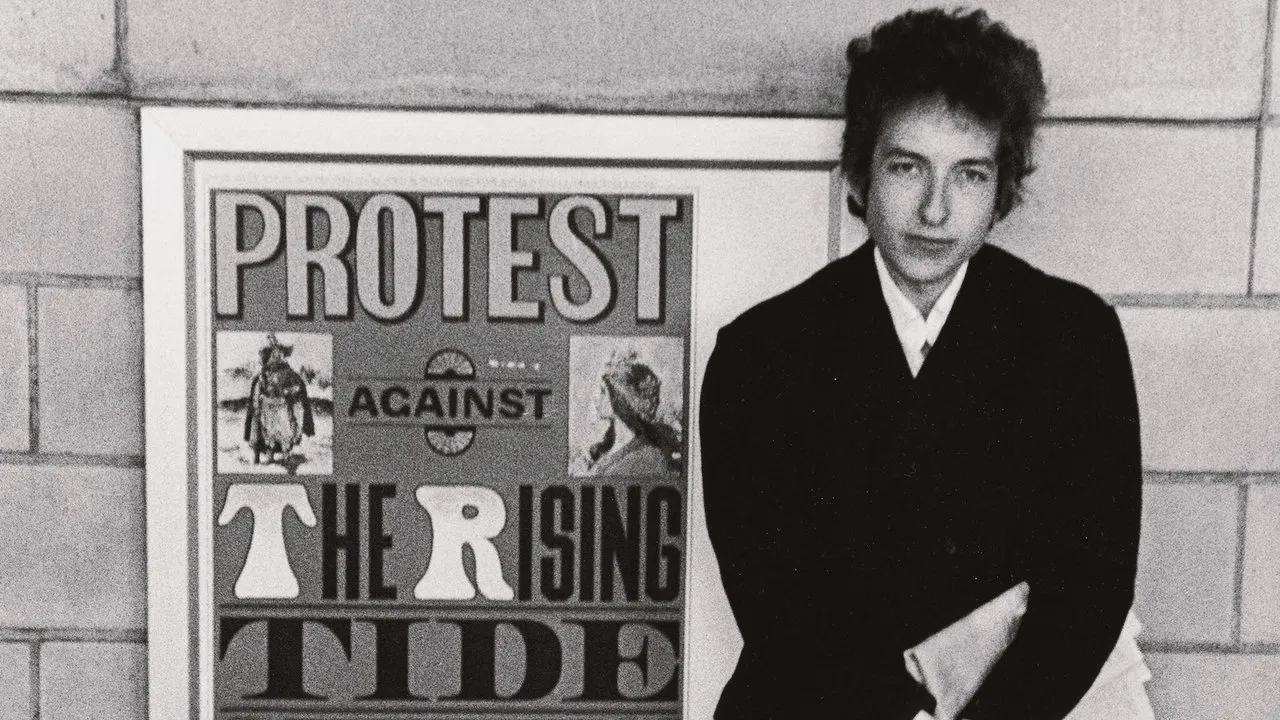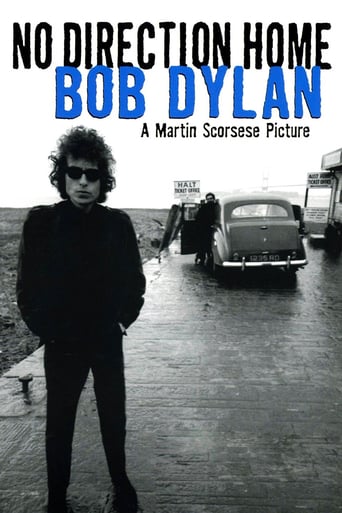

Boring
... View MoreAt first rather annoying in its heavy emphasis on reenactments, this movie ultimately proves fascinating, simply because the complicated, highly dramatic tale it tells still almost defies belief.
... View MoreThis is one of the best movies I’ve seen in a very long time. You have to go and see this on the big screen.
... View MoreBlistering performances.
... View MoreIt's a Saturday night and I just finished watching Part 1 of this and OMG, it is AMAZING. Above all the best part is hearing Dylan explain -himself- rather than someone else explaining -him-. On top of that, he is straightforward, not seeming to play mind games or be elusive. There are plenty of other great people brought in too, everyone from Allen Ginsberg to Joan Baez to Pete Seeger to Liam Clancy to Mitch Miller. And on top of THAT, there are musical performances brought in throughout, not just Dylan but people - country, folk, blues, rock - from the 50s and 60s who influenced him and the times. Overall the movie does a great job of taking you back to a particular time in history, so it's not just abut one person but the times. In this way it's quite a lot like The Nomi Song, one of my all-time favorite movies and another great, great music documentary - about the late 70s / early 80s in the underground NYC punk/experimental scene. Anyway, just great and I'll be speeding the Netflix envelope back on Monday morning so I can see Part 2 as soon as possible.
... View MoreThis biography of Bob Dylan traces his life from leaving his home in Hibbing, Minnesota until his motorcycle accident in 1966 at the age of 25. I came away from this with a renewed appreciation for just what a phenomenon he is. I can't think of any other artist who has given us what he has. There are other folk singers and rock stars, but nothing like Dylan. If you think of a poet as someone who strings words together to produce powerful images and strong emotional reactions, then Dylan is your man. I admit that a lot of Dylan's songs don't make complete sense to me, but they fascinate and afford many interpretations, and just the flow of words is captivating. The first scene in Part 2 provides a great insight. Dylan is seen on the street reading two signs, one saying, "Animals & Birds bought or sold on commission," and the other, "We will collect clip bath & return your dog/ KN1 7727/ Cigarettes and Tobacco." Dylan takes these words and goes on a spontaneous riff for a minute making sentences from them. Clearly he is a man who delights in words and has a great facility with them. You can see from this clip how he can come up with his songs. Could anyone but a poet come up with lines like: "The morning breeze like a bugle blew/ Against the drums of dawn," and "The ocean wild like an organ played/ The seaweed's wove its strands." The film traces the roots of Dylan's early musical interests; it would have been interesting to see how early on he became facile with words.It is amazing how many inane questions Dylan was asked by a largely ignorant press. Questions like, "Why do you sing?" and "How do you explain your popularity?" It's no wonder he could get frustrated and annoyed. Clips from a current interview are interspersed throughout the film, so Scorcese was able to get more meaningful comments out of him than any of the questioners shown here.As any good artist Dylan keeps changing. When he went from acoustic guitar to electric with a backup band many people felt somehow betrayed, but he was just moving on. The variety of his output is quite amazing, from poignant songs like, "Lay Down Your Weary Tune," to biting social commentary like "Only a Pawn in the Game," to wistful love songs like "Girl From the North Country," and then all the classics that were the soundtrack for a generation. This film seems to imply that Dylan's career ended with his motorcycle accident, but far from it--he has continued to write and record, having released a new album as recently as 2006.Another topic of interest covered is the artist/businessman relationship. Most artists want to reach as large an audience that can appreciate them and this usually means that there must be agents, promoters, and investors in the picture. Dylan seems to have navigated this precarious situation successfully while still preserving his integrity. He was not above embellishing his background and you have to feel that he has to have some business sense to have wound up where he is. But he appears to come from that breed of artist whose main goal is to practice his craft rather than achieve fame.I found parts of the film not completely successful. The interviews with some lesser knowns as Paul Nelson and John Cohen were of questionable value to me--it was not clear just what role they played in Dylan's career. The interviews with Alan Ginsberg are interesting, but his importance might not be understood by one not of his generation. It was frustrating to have songs interrupted or cut short, but I suppose that was necessary in the interests of keeping this under four hours.Of course the archival footage of, and current interview with, Joan Baez are highlights. I had forgotten just what a pure voice she had, a voice that seemed almost too perfect to be of this world. There is some great archival footage of Johnny Cash, a great performance by Odetta, and fascinating clips of John Jacob Niles, Peter LaFarge, and the Clancy Brothers. Put Dylan's poetry to music together with his musical talent and distinctive voice and you have a complete package. Of course not everyone appreciates that package, but as Joan Baez said, "If you're interested, he goes way, way deep."This is an ambitious biography of a complex man and even at almost four hours one feels that much has been left off the table. The work of any artist must remain a mystery.
... View MoreThis documentary is distinguished chiefly by Bob Dylan's early and least attractive persona. The film catches glimpses of his relationship with Joan Baez and, although Joan sings only briefly -- doodling on her guitar as it were -- it captures the brilliance of her voice during the time when she was a nobody and Dylan's lover. ("The Madonna for free..." as she sings in one of her later songs -- "Diamonds and Rust," I believe.) The Dylan on display in this film is a thoroughly unattractive human being. And although his voice is now tolerably good, probably due to sound engineering, his voice then was simply dreadful even if the songs he sang were remarkable.
... View MoreIf you don't appreciate Dylan, you can appreciate him as a multi-talented musicians because that's what he is and that's what he set out to be. Bob Dylan is modern-day and back in the day marvel. He is a living legend. He can sing, play the guitar and the harmonica all at once! No one even comes close to him with his many talents. And Scorsese, with his unparalleled directing abilities, couldn't have put this chronicle of Bob Dylan any better. A five-star biography, if you will and a remembrance of the greatest folk singer out there and quite possibly thee greatest musician. Bob Dylan is a monumentous poet/musician/whatever you want to call him and it was only fitting that Scorsese took on this behemoth. Great job, five-star. Simply astonishing and beautiful!
... View More